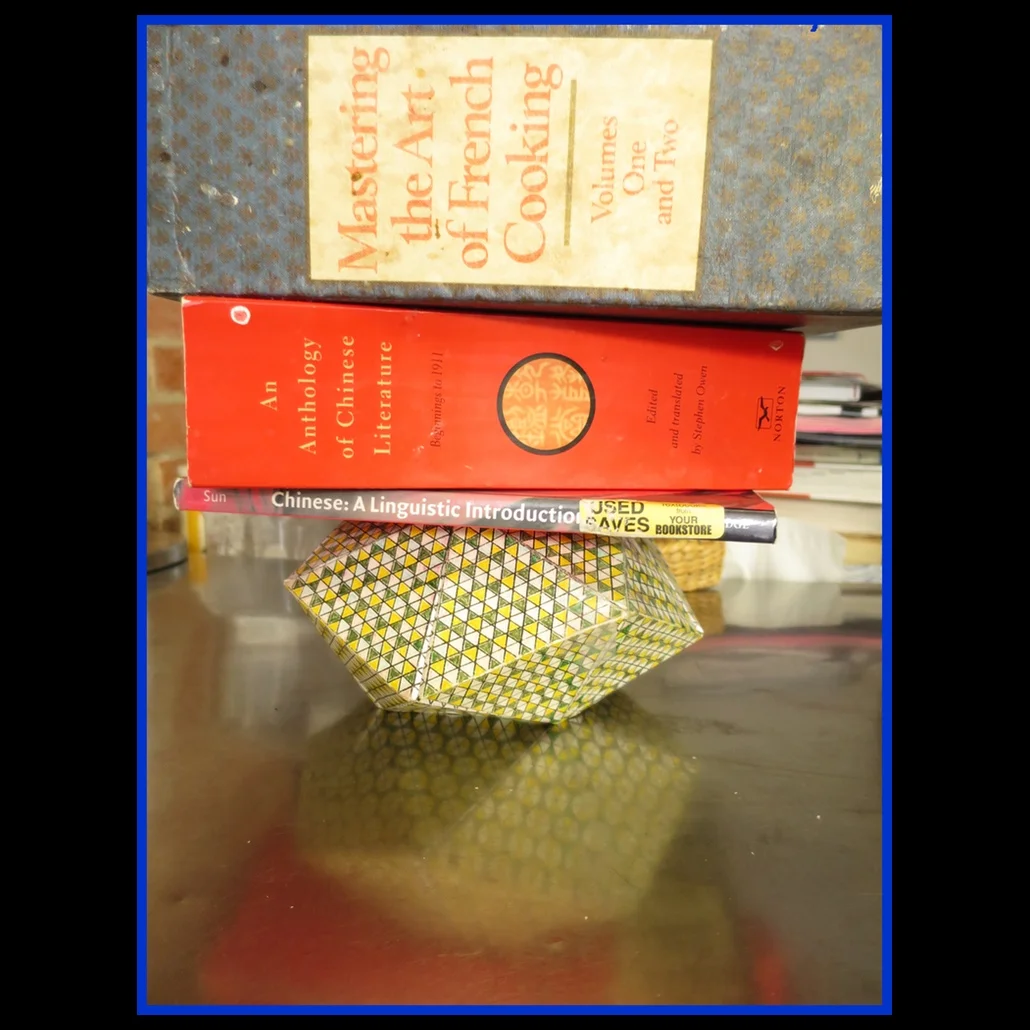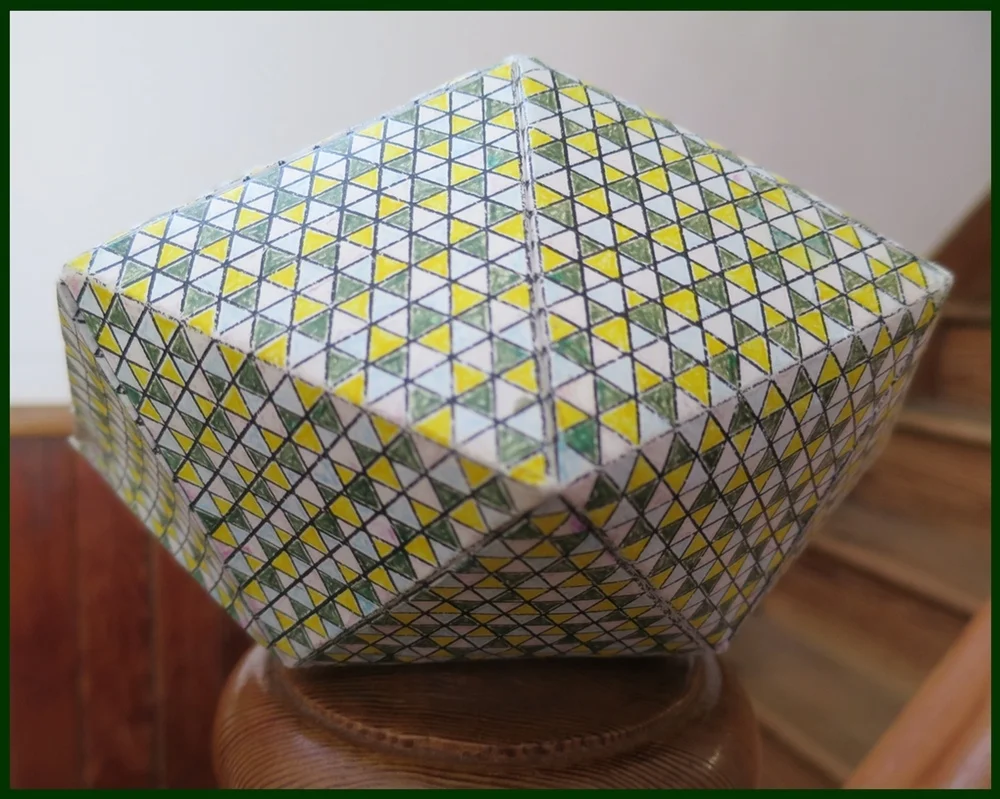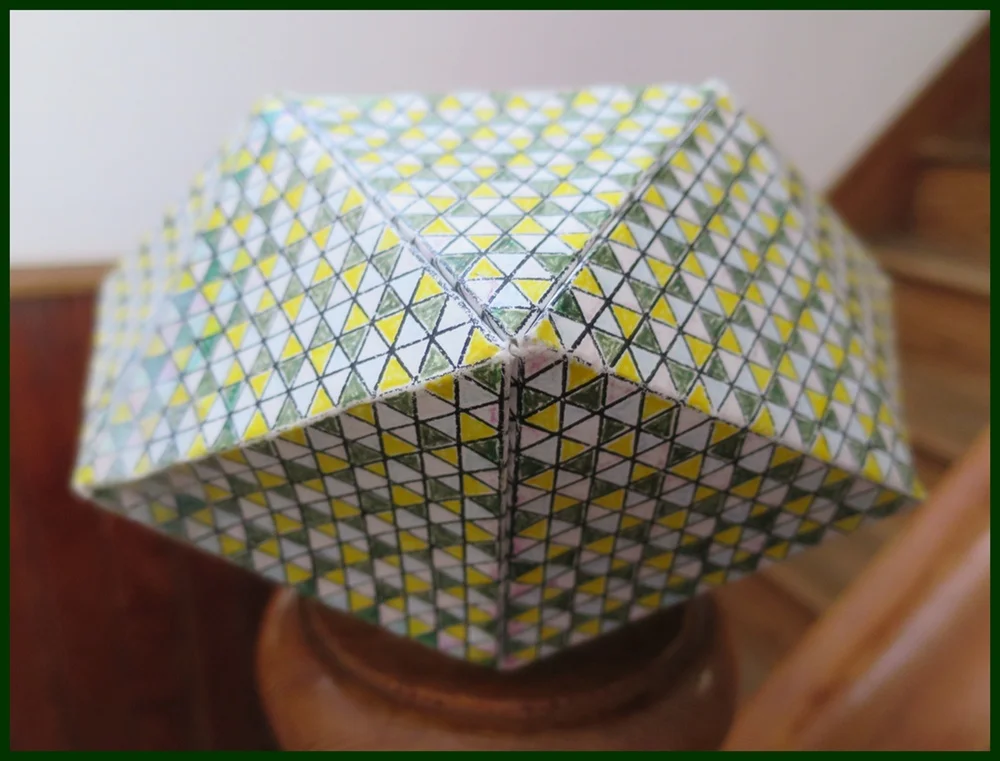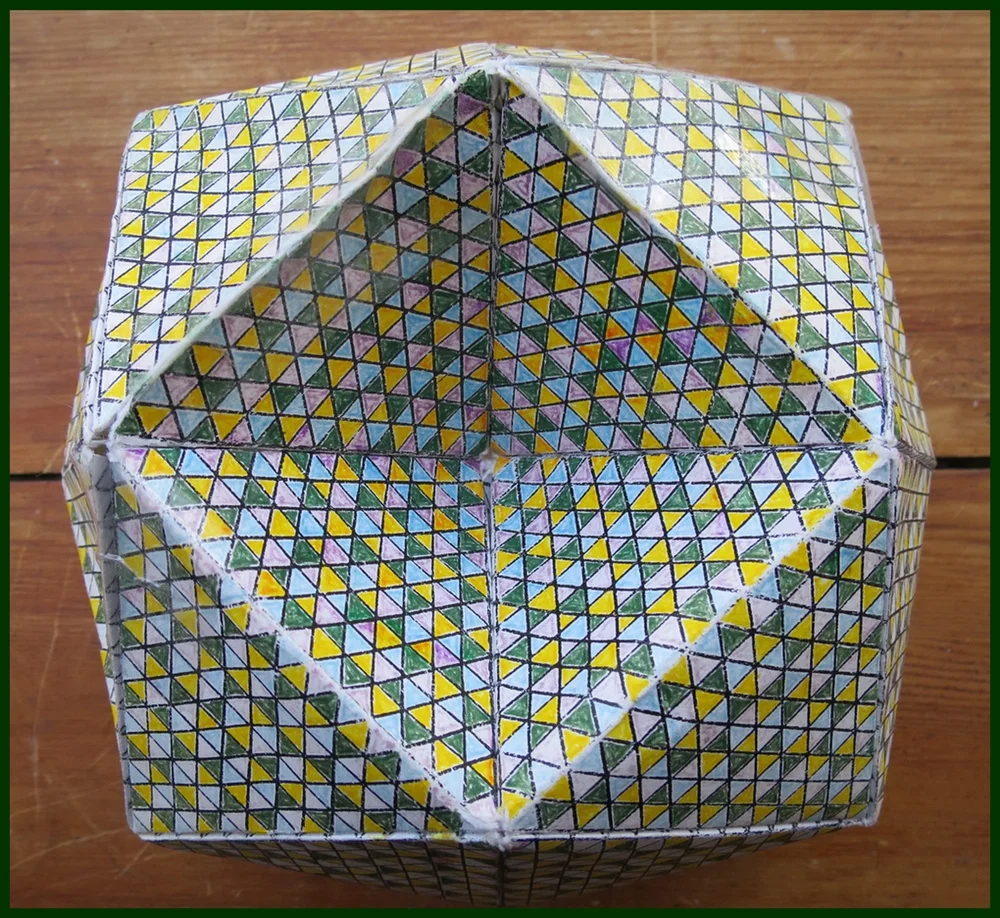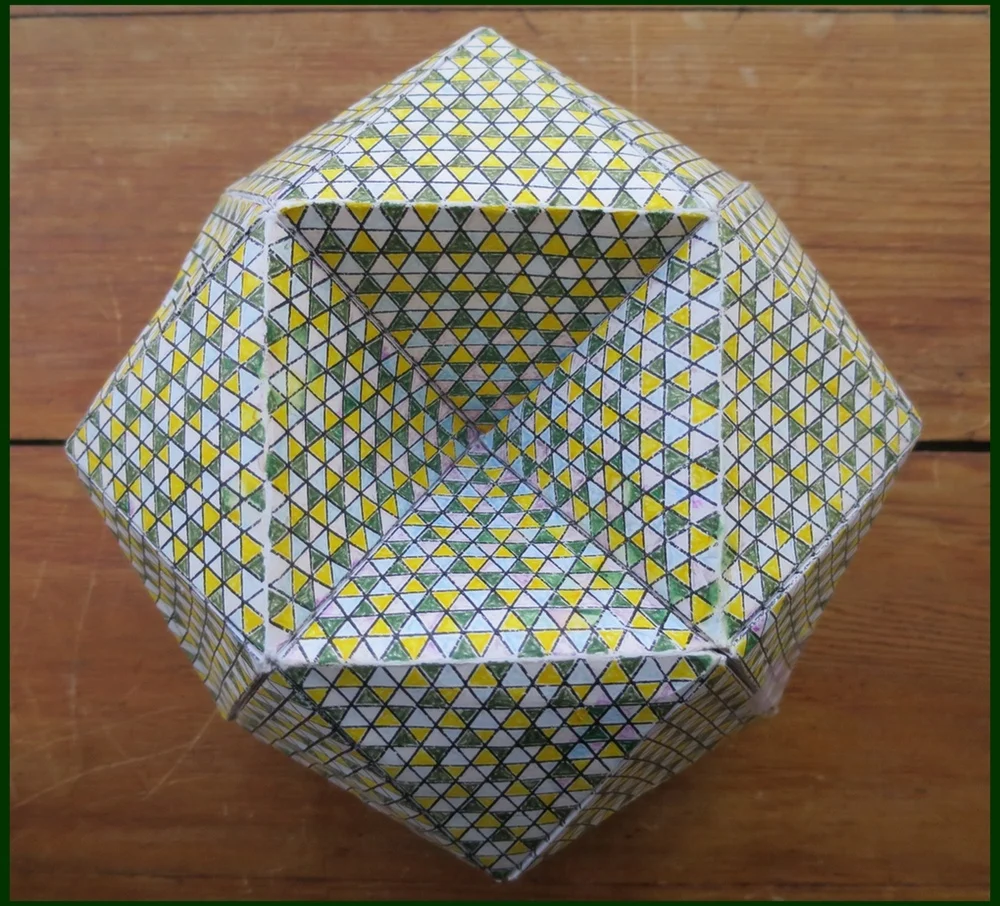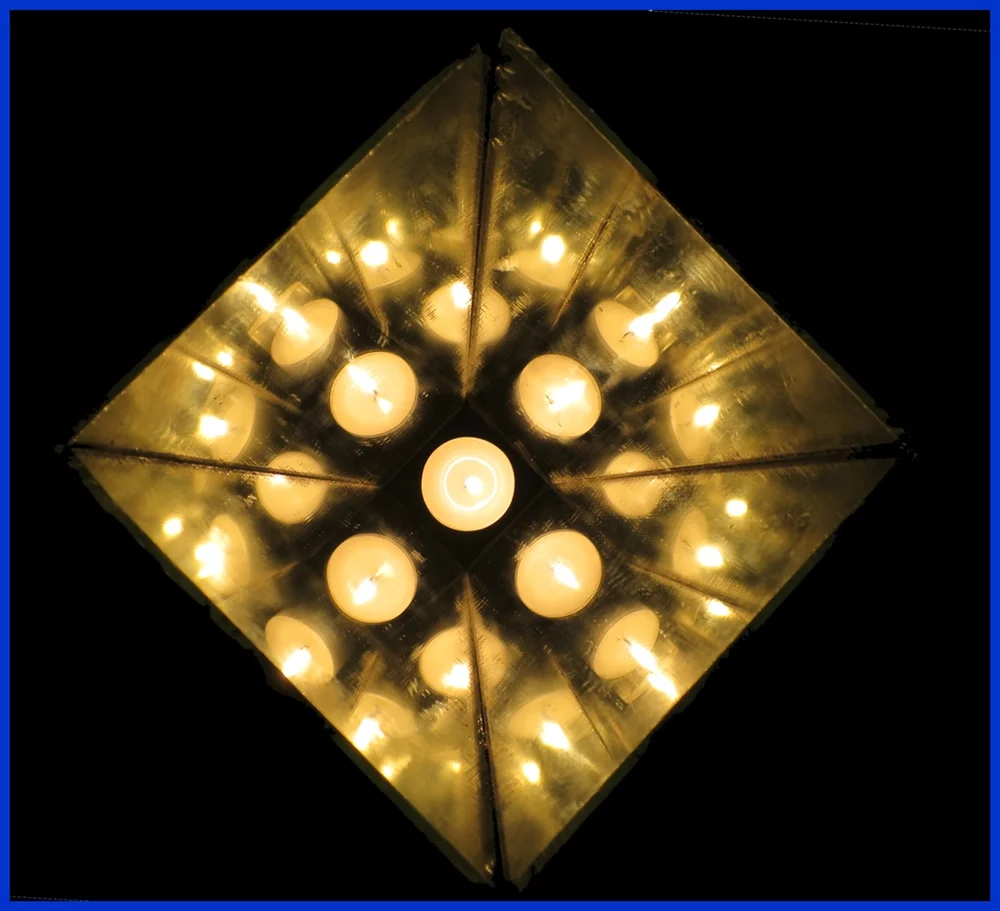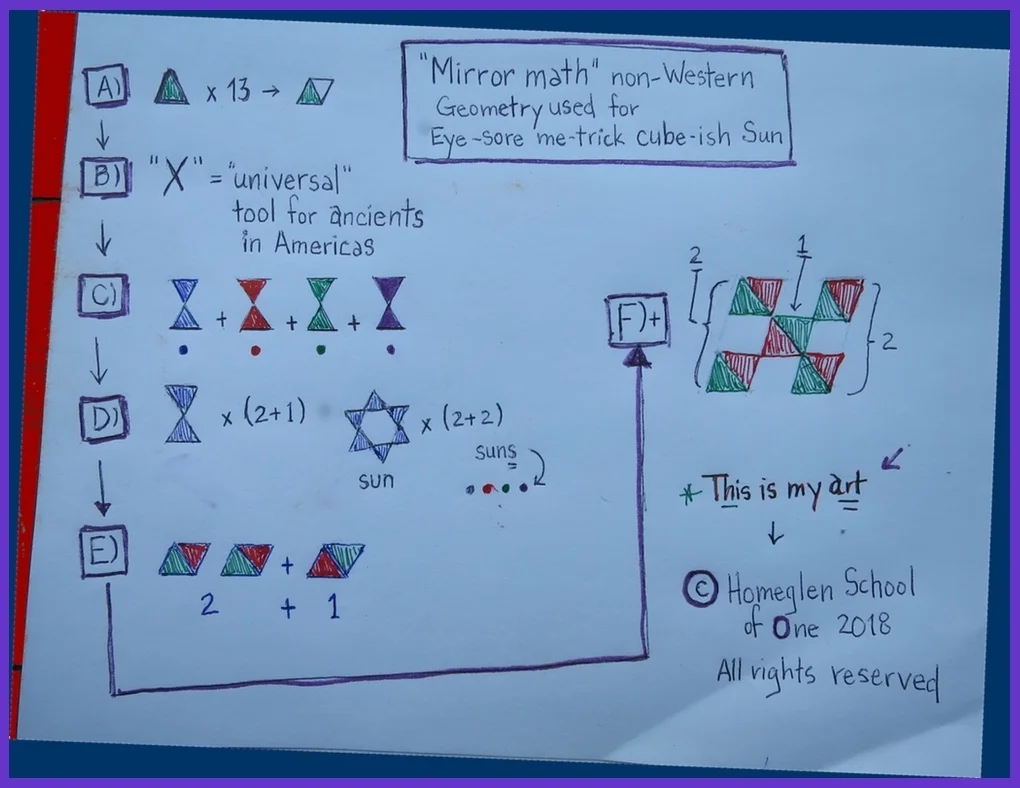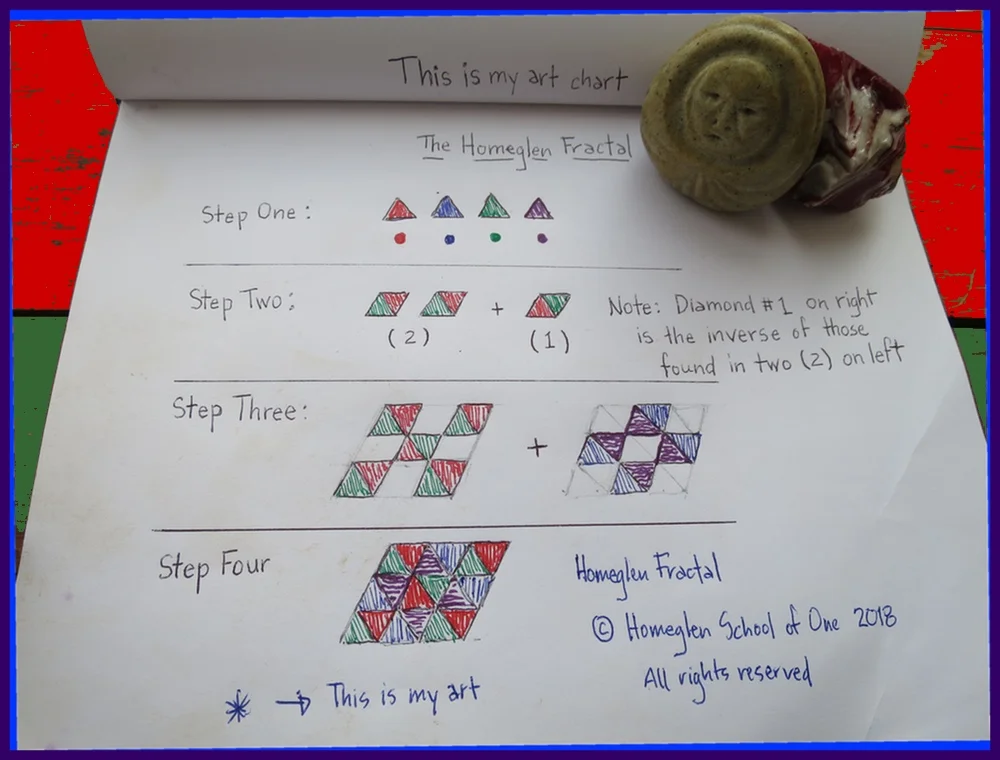Mirror Math:
The Carver's Arts4Memory "Workshop" Page
Regarding "Eye-sore Me-trick Cube-ish Prairie Sun"
The paper sculpture "eye-sore me-trick cube-ish Prairie Son" engages in some heavy Sunday afternoon reading. Hence, Art in support of engineering (and vice versa).
As seen in two recent collaborative “mirrored” myarchivo-e microvideos posted on Youtube and Twitter after the material found here was first published by the School of One, the paper sculpture called “Eye-sore Me-trick Cube-ish Prairie Sun” spins when it is held “at the corners”. Comprised of 16 isometric grids (13 x 13 units each) glued together, it will support weight far beyond its own (as illustrated in the “Weighty Reading” installation found in this first image). The geometric shape is also characterized by aerodynamic and remarkable “shock-absorbing” qualities (see, for example, the video below when it is dropped twice with an egg). Meanwhile, within the realm of “comparative cultural geometry”, diamonds and triangles were a fundamental shape for a variety of ancient Mesoamerican and Eurasian representational motifs, still visible as “stars” on contemporary textiles that also break down the spectrum into component parts.
Rossdale Vistas of the "Prairie Sun" Sculpture and Geometric Shape
While variation “#1” of “Prairie Sun” seen here is fairly well worn and faded, it still is consistent with subsequent versions of the piece that utilized four different colours to offer original interpretive conjecture into one visible way four previous “stars” or “suns” (2 + 2 parts) can, indeed, inform a fifth “Alberta sun” (the sculpture itself as the “1”) governing our present, a notion of time and space that compares neatly with the basic parameters found in the Aztec Calendar Stone of Five Eras (2 + 2 + 1). Here, too, it is important to stress that the “Prairie Sun” sculpture was conceived ultimately from the Carver's own Albertan perspective and the piece does not immitate or copy any else's work, past or present, even though certain comparative concepts from the extant historical record were considered. The Carver’s approach to his art, which categorically rejects the colonization and appropriation of other cultural traditions, is informed by years of “comparative global” university teaching, advanced historical research, and the transformative interpretation of extant and comparative records from non-Western cultures and societies, including those traditions stemming from the his own multicultural heritage.
The Albertan Nocturnal Star. This installation is comprised of four trapezoidal mirrors with a single candle placed at the centre base.
Some Details about This Page
This “myarchivo-e” workshop page (hidden from normal navigational categories on this website) is part of the larger "archivo-e agenda" of the Carver to record some of his experimental “dissonant Arts projects” (including those found on @arts4memory on Twitter) and his original insights into the value of comparative non-Western knowledge. The “Eye-sore Me-trick Cube-ish Prairie Sun” piece seen above is a direct result of his effort to understand and to chart the illusion of a "sphere" (the Albertan Nocturnal Star seen here) that appeared when he placed four trapezoidal mirrors in opposition to each other with a candle at their base. Meanwhile, the design found on the construction paper used for the "Prairie Sun" sculpture (and the sculpture itself) was reckoned according to a simple (2 + 2 + 1) transformative and interpretive “Homeglen Fractal” (see below) created by the Carver in order break down the spectrum into four component parts. While “Prairie Sun" and the "Albertan Nocturnal Star" are rooted in a fourth-generation Albertan’s use of interpretive art for math and science (and vice versa), the geometric piece helps us further challenge “Angleuro-centric” (and frequently racist) tropes of superiority since these works were influenced by a comparative reading of Mesoamerican and Eurasian geometric concepts and basic arithmetic for complex physics and engineering. Thus, consistent with any scholarly endeavour, the Carver always will acknowledge credit where it is due even though neither of these transformative interpretive pieces (or, for that matter, the "Homeglen Fractal") exist within comparative extant records from Mesoamerica and Eurasia or any other comparative non-Western "global society" he has studied over the past few decades.
"The Lawyers' Appendix":
Really Rough Workshop Notes & vistas are important
exhibit #1: "prairie Sun" Drops Twice with the same Egg
exhibit #2: How the "Prairie Sun" was Conceived
A) Reminder to create an isometric grid 13x13 units. B) "X" is a "mirrored V" symbol and tool the Carver encountered during research into extant records and it has proven to be central to understanding "movement", especially with respect to Light. C) To make a "Prairie Sun" four (2 + 2 + 2 + 2) sets of inverted triangles (in four different colours) are needed. D) When multiplied by 3 and connected to each other on their respective top and bottom corners, each "set" found in "C" above will make a "star" or "sun". E) To understand the importance of the "Homeglen Fractal" please appreciate that "#1" on the right is the inverse of those "two" on the left. F+) This shows the "initial stage" of the Homeglen Fractal.
